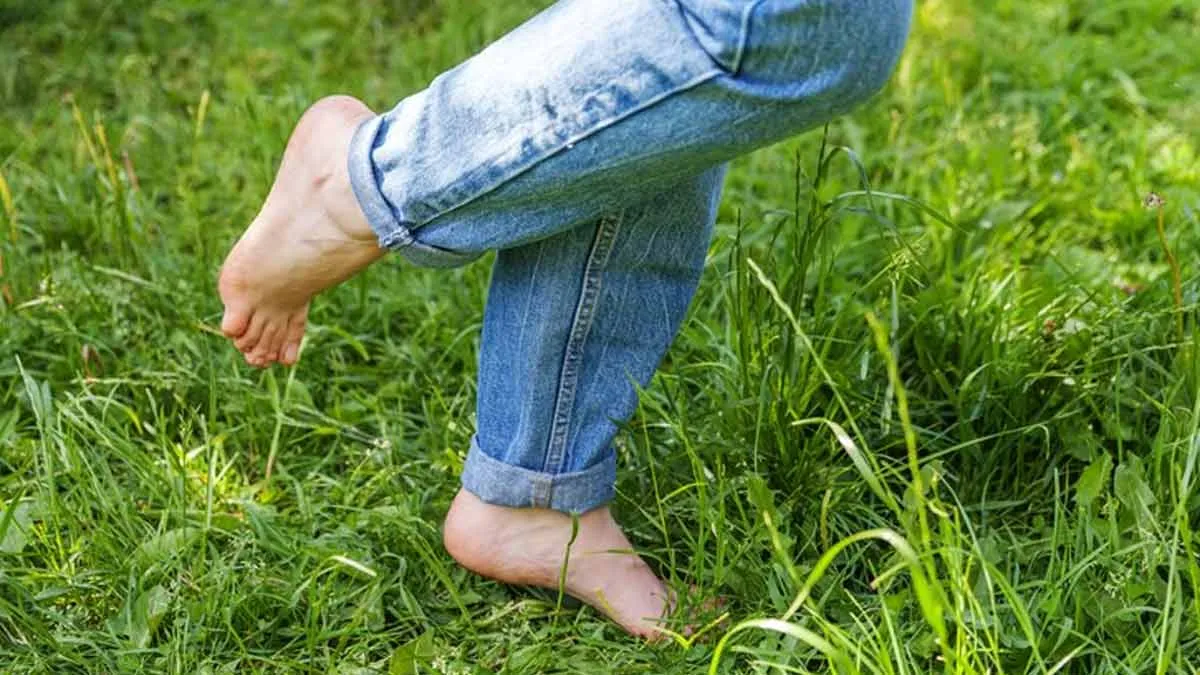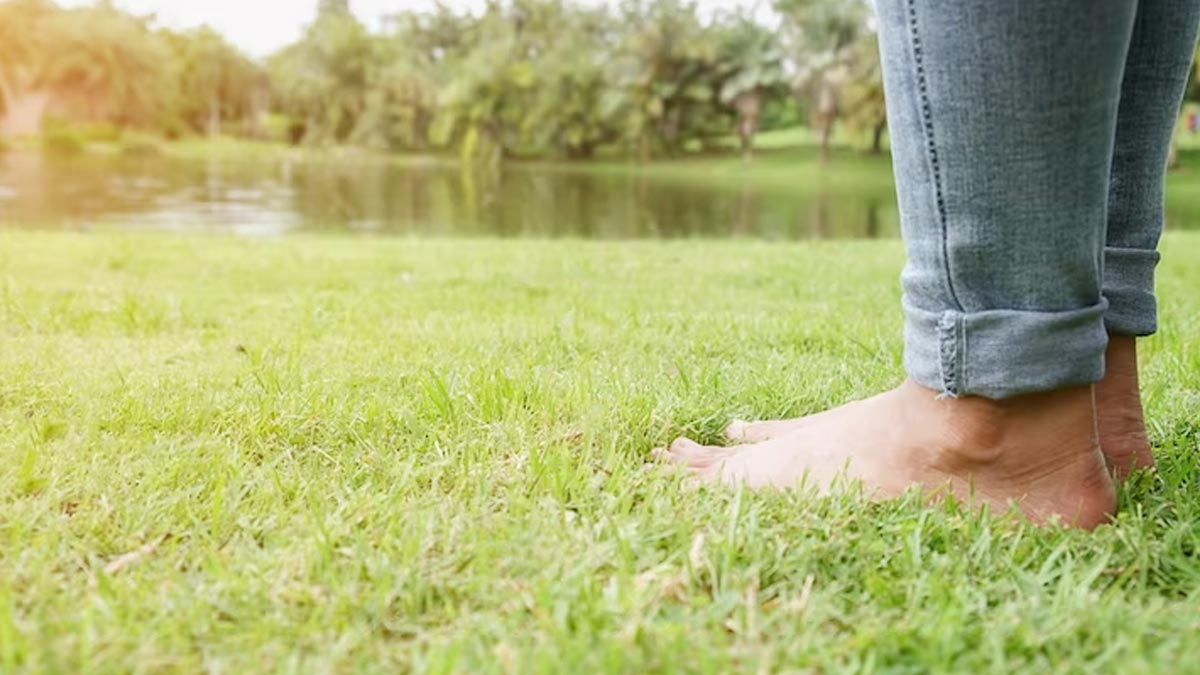
In an age dominated by screens, deadlines, and digital noise, more and more people are looking for easy, natural ways to unplug and recharge. One wellness trend that's quietly but steadily gaining momentum and is deceptively simple is walking barefoot on grass. Also referred to as earthing or grounding, the activity has been adopted as a type of micro-meditation and stress relief. But is it actually effective, or is it merely another Instagram-friendly trend? Read ahead to find that out.
Table of Content:-
CHECK YOUR
MENTAL HEALTH

What Is Grounding?
Grounding is the process of actually physically touching the Earth's surface by walking barefoot outside, usually on grass, sand, or dirt. Grounding enthusiasts think that by making this contact, the body can soak up the Earth's free electrons, which could neutralise dangerous free radicals and quell inflammation.
Although it might sound a little new age, the idea has roots in ancient knowledge as well as new science.
The Science Behind It: Can Grass Truly Calm Your Mind?
While more research is required, some studies hint that grounding might have quantifiable health advantages. The central hypothesis is that touching the Earth directly stabilises the bioelectrical systems of the body and depletes cortisol, the main stress hormone.

The Mind-Body Connection
Aside from physiology, the psychological advantages of walking barefoot outside are difficult to deny. "Grounding is basically mindfulness in action. It's slowing down and accessing the present moment through senses. The sensation of cool grass beneath, the symphony of nature sounds, even the scent of the earth, all these remind the nervous system to relax," stated Dr Bhumesh Tyagi, Consultant, General Medicine and Physician, Shardacare, Health City, Noida,
The practice provokes a parasympathetic nervous reaction, the rest and digest state, which is the opposite to the fight-or-flight response fueled by stress. It's a sensory-filled ritual that gets your awareness out of your thinking brain and into your body.
Why Grass?
Grass, particularly when it's lush and lightly dewy, provides a distinct tactile sensation that no other surface can quite replicate. It's soft, cool, and gentle, which makes it the perfect surface for new barefoot walkers. Other surfaces that are suitable for grounding are:
- Sand (on the beach)
- Bare ground or dirt trails
- Smooth river rocks
- Surfaces such as concrete or asphalt, although ubiquitous, aren't as electrically conductive or appealing on a sensory level.
How to Try It: A Simple Grounding Routine
You don’t need fancy equipment or a wellness retreat to start grounding. Here’s how to build it into your day:
- Find a clean, grassy patch (your backyard, a park, or even your lawn).
- Take off your shoes and socks.
- Stand still or walk slowly, focusing on the feeling of the grass beneath your feet.
- Breathe deeply and observe your surroundings: the sky, the breeze, the birds.
- Gamble with five to 10 minutes (or more, if you prefer), just being.
- Do this every day for a week and pay attention to any changes in your mood, sleep, or stress.
What to Look Out For
Walking barefoot is not as easy as it may look right now. Hence, there are a few warnings:
- Be careful on surfaces with broken glass, sharp debris, or possible allergens.
- If you have circulatory problems or diabetes, check with your doctor first before walking barefoot.
- Ensure the grass has not been sprayed with pesticides or chemicals.
Bottomline
More scientific studies are required to conclusively show the advantages of grounding, but preliminary evidence and studies indicate that walking barefoot on grass may be a mild yet potent stress reducer. It is at least a moment of being connected to nature in an otherwise frenetic world, and that may be sufficient.
Also watch this video
How we keep this article up to date:
We work with experts and keep a close eye on the latest in health and wellness. Whenever there is a new research or helpful information, we update our articles with accurate and useful advice.
Current Version